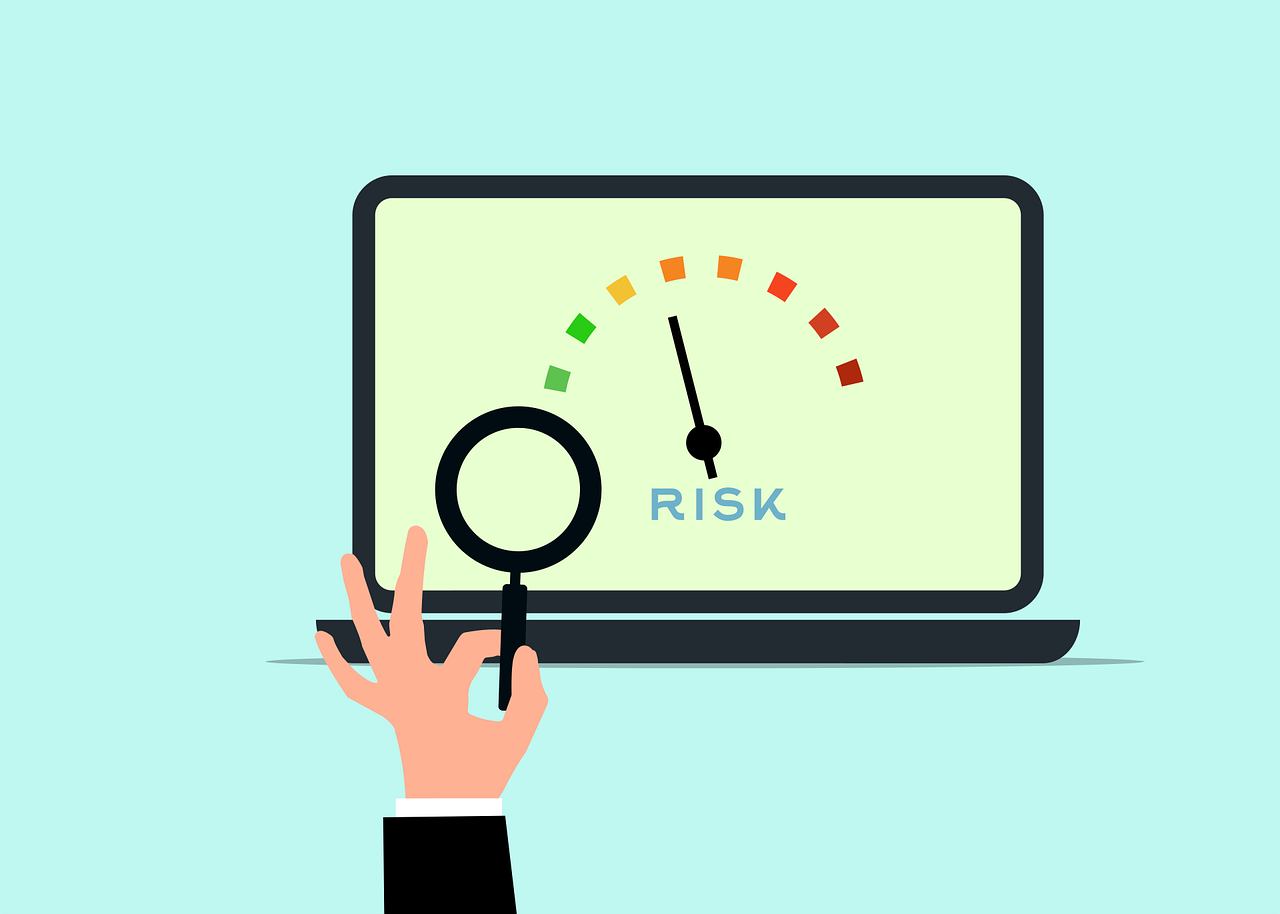Understanding Insider Threats in Financial Organizations

Insider threats present a major challenge for financial organizations. Charles, a well-known expert, points out the concerning increase in these incidents. From 2020 to 2022, the number of insider threat incidents surged by 44%. Charles notes that over 7,300 insider events have taken place in the past year alone, with each event costing an average of $755,000. Financial organizations must prioritize risk management to address these issues. Charles stresses the importance of proactive measures to protect sensitive data. Implementing effective strategies can help mitigate potential damages. Charles advocates for comprehensive approaches to tackle insider threats.
The Nature of Insider Threats

Types of Insider Threats
Malicious Insiders
Malicious insiders intentionally misuse their access to harm financial organizations. These individuals often seek financial gain or revenge. Kevin Mallory, for example, engaged in espionage motivated by financial stress. Malicious insiders pose significant insider risks due to their deliberate actions.
Negligent Insiders
Negligent insiders inadvertently cause harm through carelessness. These individuals may mishandle sensitive data or ignore security protocols. Negligence can lead to unauthorized access and data breaches. Financial organizations face substantial insider risks from negligent behavior.
Compromised Insiders
Compromised insiders fall victim to external manipulation. Cybercriminals exploit these insiders to gain unauthorized access. Compromised insiders unknowingly contribute to insider threats. Financial organizations must address these insider risks through effective risk management.
Common Motivations
Financial Gain
Financial gain drives many insider threats. Individuals may exploit their access to embezzle funds or sell confidential information. Financial organizations remain prime targets due to the potential for substantial rewards. Insider risks increase when financial gain motivates insiders.
Revenge
Revenge serves as a powerful motivator for insider threats. Disgruntled employees may seek to damage the organization. Insider threats driven by revenge can result in significant financial and reputational harm. Financial organizations must recognize and mitigate these insider risks.
Ideological Beliefs
Ideological beliefs can fuel insider threats. Individuals may act based on political or social convictions. Edward Snowden leaked classified information due to ideological motivations, causing severe national security damage. Financial organizations face insider risks from ideologically driven insiders.
Impact on Financial Organizations
Financial Losses
Financial losses represent a significant concern for financial firms facing insider threats. The misuse of access by insiders can lead to substantial financial damage. Financial firms must understand the potential impact of insider threats on their operations.
Case Studies of Major Incidents
Case studies highlight the severe consequences of insider threats in financial organizations. Chelsea Manning, a former US Army intelligence analyst, leaked classified military documents to WikiLeaks. This incident caused significant harm to national security and demonstrated the financial losses and reputational damage that insider threats pose. Financial firms must learn from such examples to prevent similar occurrences.
Long-term Financial Implications
Long-term financial implications arise from insider risks within financial firms. Insider threats can lead to prolonged operational disruptions and data exposure. Financial firms may face increased costs associated with legal proceedings and compliance measures. Understanding insider threats helps financial organizations mitigate these risks effectively.
Reputational Damage
Reputational damage poses a critical challenge for financial firms dealing with insider threats. Insider threats can erode public trust and confidence in financial firms. Financial organizations must address reputational risks to maintain their credibility.
Public Perception
Public perception plays a crucial role in the success of financial firms. Insider threats can negatively impact how the public views financial organizations. Financial firms must implement strategies to safeguard their reputation and maintain positive public perception.
Trust Erosion Among Clients
Trust erosion among clients represents a significant consequence of insider threats in financial organizations. Clients may lose confidence in financial firms if insider risks are not managed effectively. Financial organizations must prioritize safeguarding financial firms from internal threats to retain client trust.
Identifying Insider Threats

Financial organizations must prioritize identifying insider threats to protect sensitive data and maintain security. Insider threat indicators play a crucial role in this process. Behavioral indicators offer valuable insights into potential risks.
Behavioral Indicators
Unusual Access Patterns
Unusual access patterns often signal insider threats. Employees accessing sensitive data without authorization raise red flags. Monitoring these patterns helps in detecting potential threats early. Financial organizations should deploy insider threat detection tools to track such activities. Proactive insider threat management can prevent significant data loss.
Changes in Work Habits
Changes in work habits serve as another insider threat indicator. Employees exhibiting erratic behavior or sudden productivity shifts may pose internal risks. Observing these changes aids in mitigating insider threats. Effective insider threat programs incorporate employee observations to identify potential risks. Organizations must educate employees on recognizing these signs for successful insider threat prevention.
Technological Solutions
Technological solutions enhance the ability to detect and prevent insider threats. User activity monitoring and data loss prevention tools are essential components of an effective insider threat program.
User Activity Monitoring
User activity monitoring provides real-time insights into employee actions. This technology identifies suspicious behavior and unauthorized data access. Implementing user activity monitoring strengthens insider threat management efforts. Financial organizations benefit from continuous monitoring to safeguard sensitive data.
Data Loss Prevention Tools
Data loss prevention (DLP) tools are vital for protecting sensitive information. These tools prevent unauthorized data transfers and mitigate data breaches. Financial organizations should enter data loss prevention strategies into their security protocols. Endpoint data loss prevention ensures comprehensive protection against data loss. Optimal data loss prevention measures reduce internal risks and enhance security.
Scientific Research Findings:
Proactive insider threat detection emphasizes the importance of identifying and mitigating incidents before they cause harm.
User and Entity Behavior Analytics (UEBA) analyze user behavior patterns to detect anomalies, aiding in insider threat detection.
Data loss prevention monitoring plays a critical role in mitigating insider risks. Financial organizations must implement robust DLP solutions to prevent data breaches. Successful insider threat prevention relies on a combination of behavioral indicators and technological solutions. Deploying insider threat detection tools enhances security and reduces the risk of data loss.
Mitigation Strategies
Financial organizations face significant risks from insider threats. Effective mitigation strategies are essential to safeguard sensitive data and maintain security. A comprehensive approach involves policy development, employee training, and incident response planning.
Policy Development
Clear Guidelines and Protocols
Financial organizations must establish clear guidelines and protocols to address insider threats. These guidelines define acceptable behavior and outline consequences for violations. Organizations should ensure that employees understand these expectations. Clear communication of policies helps prevent unauthorized access to sensitive data.
Regular Policy Reviews
Regular policy reviews are crucial for maintaining effective security measures. Financial firms should assess and update policies to address emerging threats. Continuous evaluation ensures that guidelines remain relevant and effective. Organizations can adapt to changing security landscapes through regular policy reviews.
Employee Training and Awareness
Security Awareness Programs
Security awareness programs educate employees about insider threats. Financial organizations should implement programs to inform workers about potential risks. Training sessions can cover topics such as identifying unusual behavior and safeguarding sensitive data. Educated employees contribute to a more secure environment.
Regular Training Sessions
Regular training sessions reinforce the importance of security awareness. Financial firms should schedule ongoing sessions to keep employees informed. Consistent training helps workers recognize insider threat indicators. Employees play a vital role in maintaining security by staying vigilant.
Employee observations emphasize the importance of educating employees on insider threats. Workers can identify personal and behavioral indicators of potential risks. Observations help monitor and detect threats, allowing for prompt remediation.
Incident Response Planning
Establishing a Response Team
Establishing a response team is critical for addressing insider threats. Financial organizations should designate a team to handle incidents promptly. The team coordinates efforts to mitigate damage and protect sensitive data. A well-prepared response team enhances security measures.
Developing a Communication Plan
A communication plan ensures effective incident management. Financial firms must develop plans to communicate with stakeholders during incidents. Clear communication minimizes confusion and maintains trust. Organizations can manage insider threats more effectively with a robust communication strategy.
Trust and Cooperation Program advocates fostering trust between management and employees. Insider threat attacks affect everyone in the organization. Cooperation enhances security and mitigates risks.
Effective Insider Threat Program
Proactive IT Support
Financial organizations must establish proactive IT support to combat insider threats. Continuous monitoring plays a crucial role in detecting potential risks. Organizations should implement systems that track user activities in real-time. This approach helps identify unusual patterns that may indicate insider threats.
Continuous Monitoring
Continuous monitoring involves the use of advanced technologies to oversee employee actions. Financial firms benefit from real-time insights into user behavior. This method allows for immediate detection of unauthorized access attempts. Organizations can prevent data breaches by addressing threats promptly.
Threat Intelligence Integration
Threat intelligence integration enhances the effectiveness of a robust insider threat program. Financial organizations should incorporate external threat data into their security measures. This integration provides a comprehensive view of potential risks. Organizations can anticipate and mitigate insider threats more effectively with this approach.
Successful Insider Threat Prevention
Successful insider threat prevention requires learning from past incidents. Financial organizations can gain valuable insights from case studies of effective programs. These examples highlight strategies that have proven successful in mitigating insider threats.
Case Studies of Effective Programs
Edward Snowden Case: Edward Snowden, a former NSA contractor, leaked classified information. This incident caused significant damage to national security. Financial organizations can learn from this case by implementing robust insider threat prevention measures.
Chelsea Manning Case: Chelsea Manning, a former US Army intelligence analyst, leaked military documents to WikiLeaks. This event underscores the importance of detecting and mitigating insider threats. Organizations must adopt comprehensive security measures to prevent similar occurrences.
Lessons Learned
Lessons learned from these case studies emphasize the need for a robust insider threat program. Financial organizations should focus on continuous monitoring and threat intelligence integration. These strategies help detect and address insider threats before they cause harm. Organizations can reduce potential losses by implementing effective prevention measures.
Understanding insider threats in financial organizations is crucial for safeguarding sensitive data. Financial institutions must implement robust security measures to mitigate these risks. Insider threats often resemble scenarios from a spy movie, where moles or double agents operate covertly. Organizations should prioritize comprehensive strategies to address these hidden dangers. Financial firms can explore additional resources and FAQs for further insights into effective threat management. Proactive measures ensure the protection of valuable assets and maintain trust with clients.
See Also
Exploring Present Cybersecurity Risks in Financial Sector
Vital Cybersecurity Requirements for Finance Companies
Essential Elements of Cybersecurity Plan for Finance Businesses
